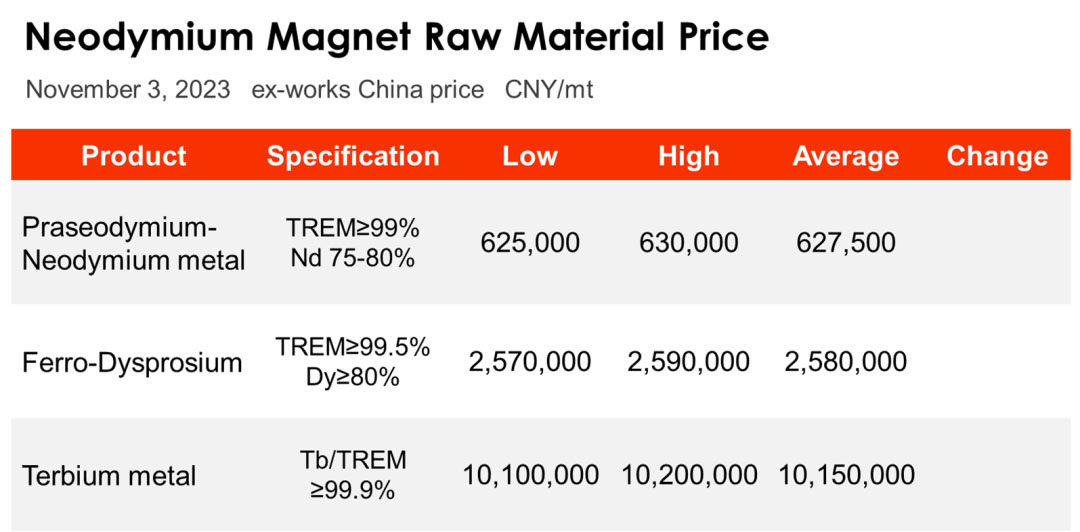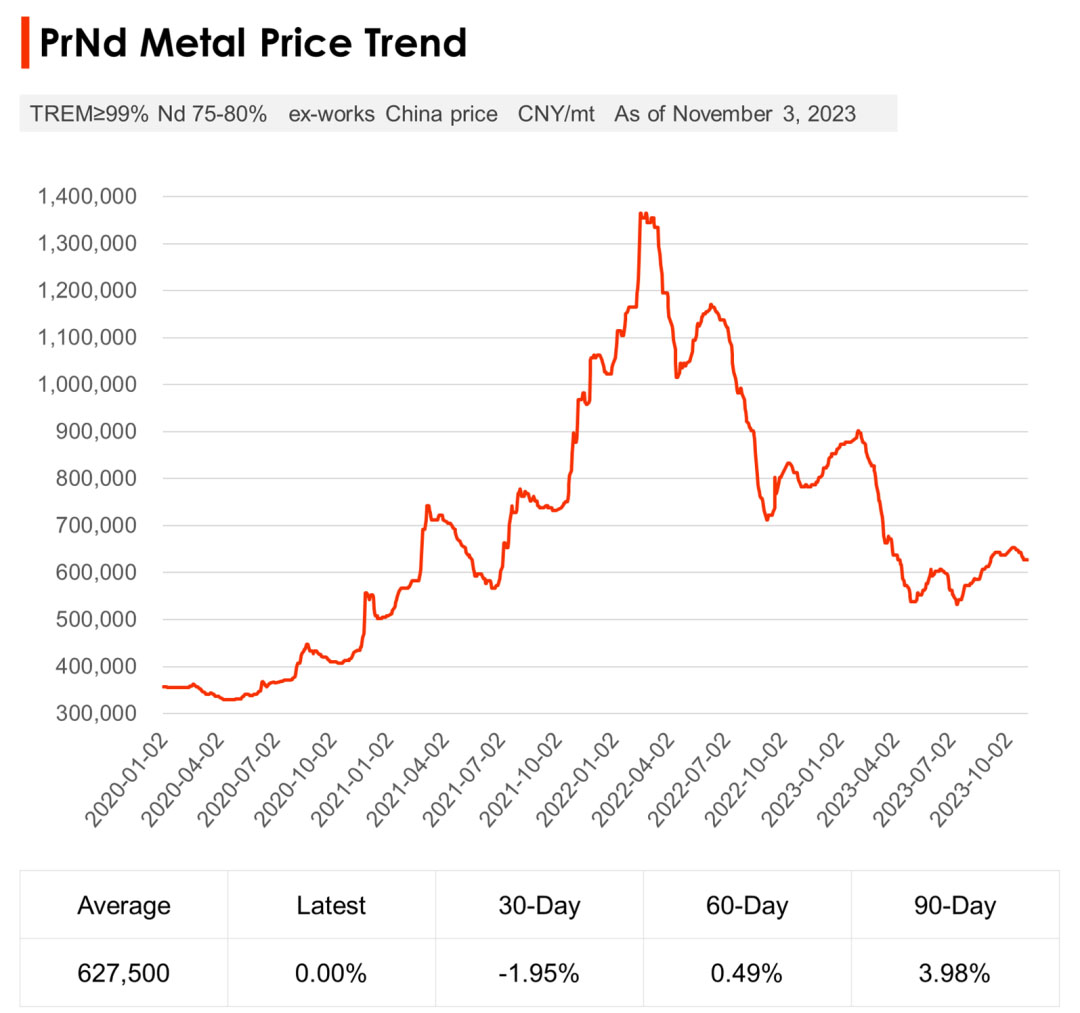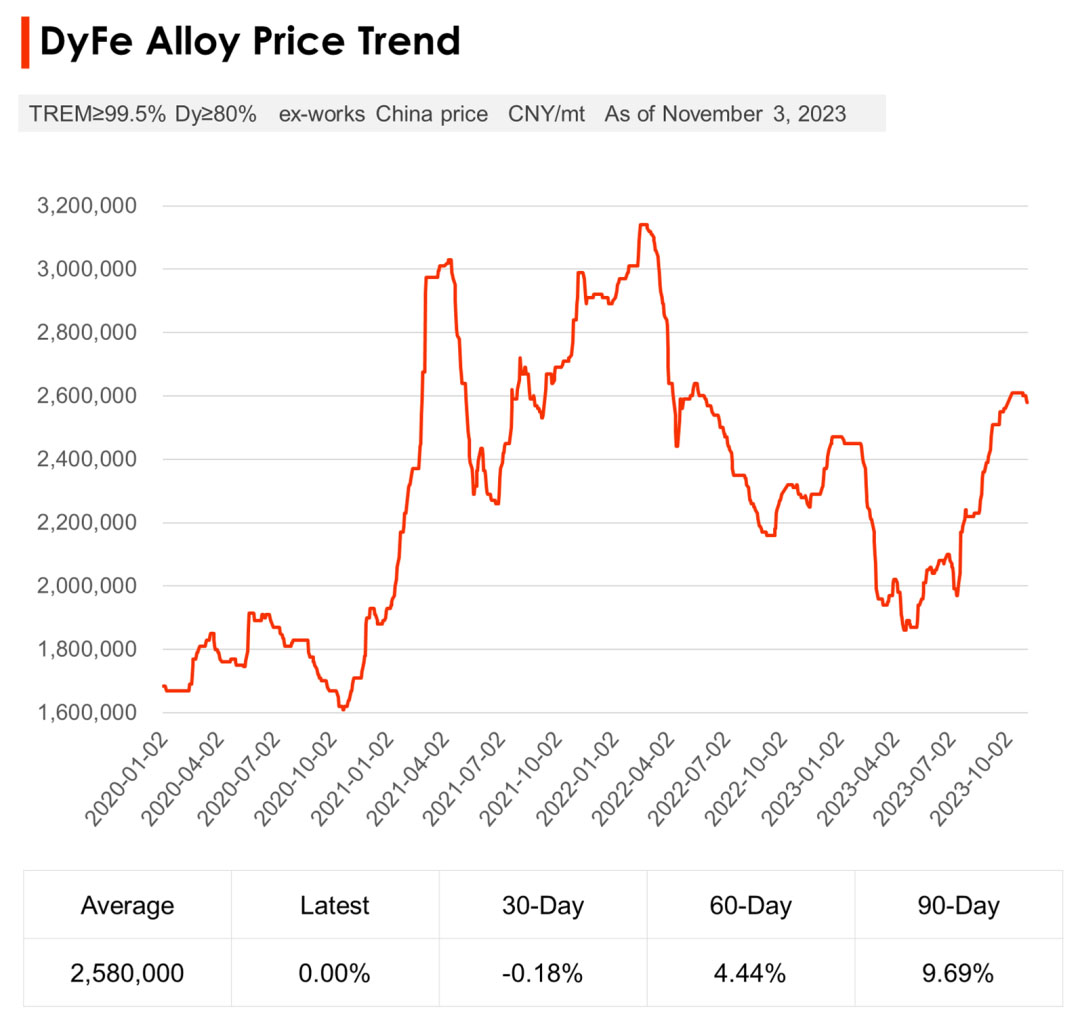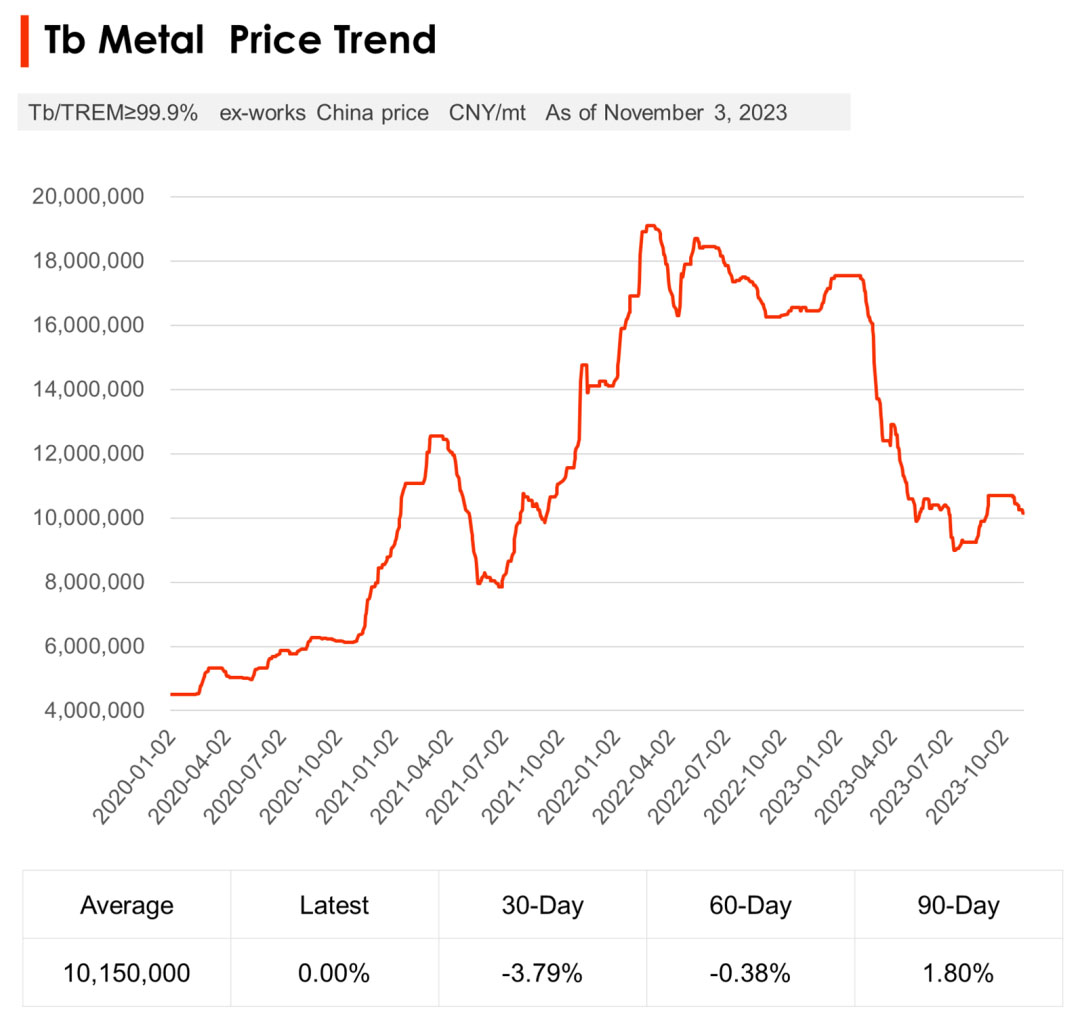
November 3, 2023 Neodymium magnet raw material price
2023-11-03 14:48An overview of the neodymium magnet raw material latest price.

The price of PrNd metal has a decisive effect on the price of neodymium magnets.

The price of DyFe alloy has a considerable influence on the cost of high coercivity neodymium magnets.

The price of Tb metal has a considerable influence on the cost of high intrinsic coercivity and high energy neodymium magnets.

Data source: MagnetSearcher
Q1. What is the current raw material price of ndfeb?
A1. The current raw material price of ndfeb, also known as neodymium magnets, fluctuates based on supply and demand. However, it is generally more expensive than other types of magnets due to the high cost of neodymium, iron, and boron used in its production.
Q2. Are there any alternatives to ndfeb magnets that are more cost-effective?
A2. Yes, there are some alternatives to NdFeB magnets that are more cost-effective. Some of the options include:
Ferrite magnets: These are made from iron oxide and strontium carbonate, and are relatively inexpensive compared to NdFeB magnets. However, they are not as strong as NdFeB magnets.
Alnico magnets: These are made from aluminum, nickel, and cobalt, and are stronger than ferrite magnets but weaker than NdFeB magnets. They are also more expensive than ferrite magnets.
SmCo magnets: These are made from samarium and cobalt, and are stronger than NdFeB magnets. However, they are much more expensive.
The choice of magnet will depend on the specific application and the desired strength of the magnet. It's important to consider both the cost and the performance requirements when selecting a magnet.
Q3. How do changes in the global economy impact the price of ndfeb raw materials?
A3. Changes in the global economy can have a significant impact on the price of raw materials, including ndfeb (neodymium-iron-boron) raw materials. The price of ndfeb raw materials is influenced by various factors, such as supply and demand dynamics, currency fluctuations, trade policies, and global economic trends.
When the global economy is experiencing growth and increased industrial activity, the demand for ndfeb raw materials tends to rise. This can be due to the increased production of electronic devices, renewable energy technologies (such as wind turbines), and electric vehicles, which rely heavily on ndfeb magnets.
Additionally, changes in the availability of raw materials can impact their prices. Ndfeb magnets require rare earth elements like neodymium and dysprosium, which are not widely available. Any disruptions in the supply chain, such as restrictions on mining or export quotas imposed by producing countries, can lead to price fluctuations.
Currency fluctuations also play a role in the price of ndfeb raw materials. As these materials are traded globally, changes in exchange rates can affect their cost. For example, if the currency of a major producer or consumer of ndfeb raw materials strengthens, it may make imports more expensive, leading to higher prices.
Trade policies, such as tariffs or export restrictions, can also impact the price of ndfeb raw materials. Changes in trade agreements or geopolitical tensions can disrupt supply chains and affect prices.
In summary, changes in the global economy can impact the price of ndfeb raw materials through factors like supply and demand dynamics, currency fluctuations, trade policies, and global economic trends.
